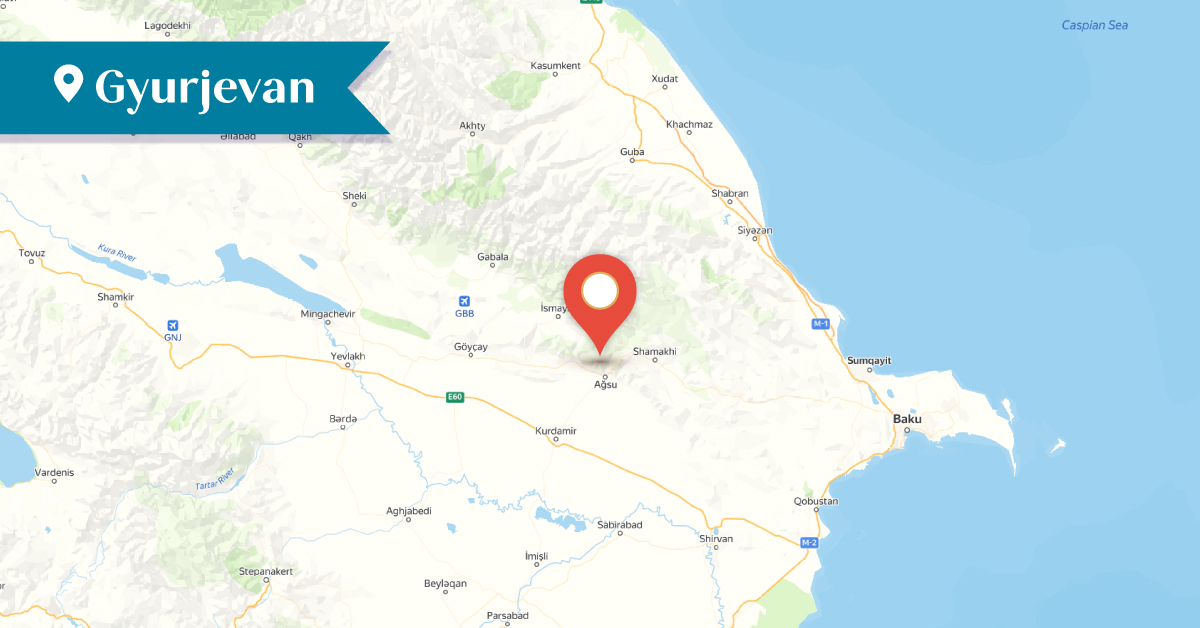2025
2025
2025-02-17

Gyurjevan was the largest Armenian-populated settlement in the Aghsu region. In 1861, the village had 120 Armenian households. By 1890, Gyurjavan had 242 households with 1,225 Armenian residents, and by the early 20th century, in 1904, it had 312 households with a population of 1,864 Armenians. The population of Gyurjevan suffered greatly during the events of 1918–1919.
In 1986, Gyurjevan village was entirely Armenian-populated, with a total of 546 residents, who were forcibly displaced in 1988.
In the center of Gyurjevan, there was a church named Saint Grigoris, which has not been preserved. Bishop Makar Barkhutaryants copied and published the inscription of the village’s old church.
The Holy Church was built ...
by the order of Vardapet Toma and the Catholicos of the Armenians
Movses in 1633.
According to another inscription, a new church was later built on the site of this church.
In 1836, the Church of Saint Grigoris of Gyurjevan
was built with the funds of the people.
Written by Ter Sargis Ohanian.
During monument specialist Samvel Karapetyan’s visit, eleven tombstones with Armenian inscriptions were preserved in the old cemetery of Gyurjevan.
S. Karapetyan also published the inscription of a spring known as Ghadrut, located 2 kilometers from the village.
In 1908, this spring was built with the funds
of the Gyurjevan resident Martiros Vlasyants.
The village is now called Khanbulagh (Azerb. Xanbulaq) and is populated by Azerbaijanis.
Bibliography
Barkhutaryants M., Land of Aghvank and its Neighbors: Artsakh, Yerevan, 1999.
Karapetyan S., The Armenian Lapidary Inscriptions of Aghvank Proper, Yerevan, 1997.